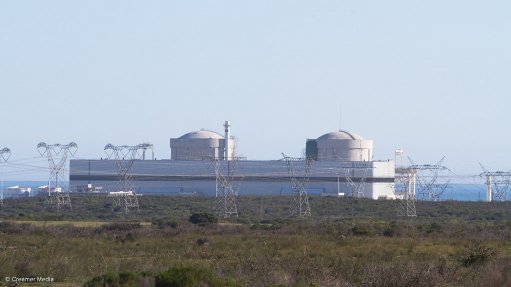
Photo by: Creamer Media
The National Nuclear Regulator (NNR) on Monday assured that a reported incidence of airborne contamination at the Koeberg Nuclear Power Plant (NNP) did not come from the nuclear reactor. Koeberg, which is owned and operated by State-owned national electricity utility Eskom, has two reactors and is the country’s (and indeed Africa’s) only NPP. (The SAFARI-1 nuclear reactor at Pelindaba, west of Pretoria, is owned and operated by the South African Nuclear Energy Corporation and is a research reactor which does not generate any electricity.)
The contamination was detected during a routine test of the Koeberg Security Central Alarm Station’s ventilation system. (During such tests, which are conducted on a regular basis, Iodine-131, which is radioactive, is used in tiny amounts to represent the kind of contaminant that the ventilation system has to filter out, in the event of a nuclear accident at the NPP.)
“The NNR conducted its initial inspection of the occurrence and can confirm that the airborne contamination in the Koeberg Security Central Alarm Station did not come from the nuclear power plant,” reported NNR regulatory programme manager nuclear power plant Peter Bester. “The NNR inspection data indicated that there are currently no health and safety concerns to [the] public or workers as a result of this occurrence.”
His statement is based on the preliminary investigation results provided by the Authorisation Holder. The NNR is continuing its oversight activities at Koeberg, including following up on Eskom’s corrective actions to prevent future such occurrences.
The NNR was set up under Section 3 of the National Nuclear Regulator Act (Act no. 47 of 1999). Its core function is to ensure the safety and protection of people, the environment and property from nuclear damage, by establishing regulatory practices and safety standards appropriate for South Africa and through oversight of the country’s nuclear activities.